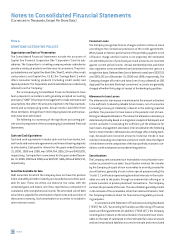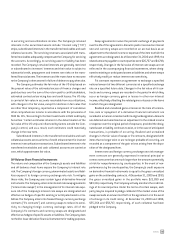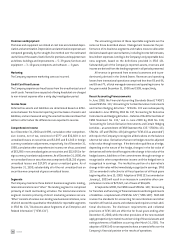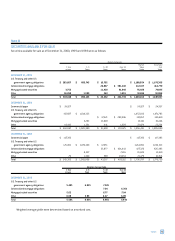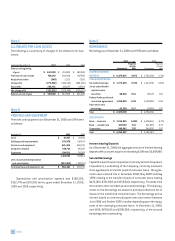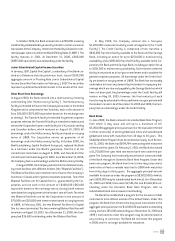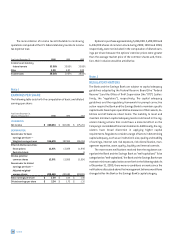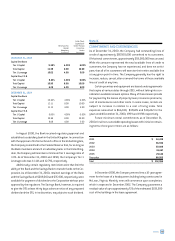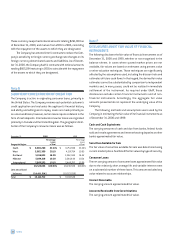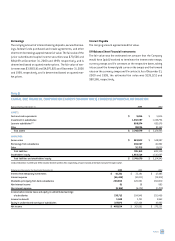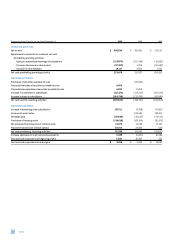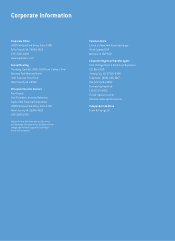Capital One 2000 Annual Report Download - page 60
Download and view the complete annual report
Please find page 60 of the 2000 Capital One annual report below. You can navigate through the pages in the report by either clicking on the pages listed below, or by using the keyword search tool below to find specific information within the annual report.
The reconciliation of income tax attributable to continuing
operations computed at the U.S. federal statutory tax rate to income
tax expense was:
Year Ended December 31 2000 1999 1998
Income tax at statutory
federal tax rate 35.00% 35.00% 35.00%
Other 3.00 2.07 3.00
Income taxes 38.00% 37.07% 38.00%
Note I
EARNINGS PER SHARE
The following table sets forth the computation of basic and diluted
earnings per share:
Year Ended December 31
(Shares in Thousands) 2000 1999 1998
NUMERATOR:
Net income $ 469,634 $ 363,091 $ 275,231
DENOMINATOR:
Denominator for basic
earnings per share —
Weighted-average shares 196,478 197,594 196,769
Effect of dilutive securities:
Stock options 12,971 13,089 11,990
Restricted stock 6
Dilutive potential
common shares 12,971 13,089 11,996
Denominator for diluted
earnings per share —
Adjusted weighted-
average shares 209,449 210,683 208,765
Basic earnings per share $ 2.39 $1.84$1.40
Diluted earnings per share $ 2.24 $1.72$1.32
Options to purchase approximately 5,496,000, 5,200,000 and
6,436,000 shares of common stock during 2000, 1999 and 1998,
respectively, were not included in the computation of diluted earn-
ings per share because the options’ exercise prices were greater
than the average market price of the common shares and, there-
fore, their inclusion would be antidilutive.
Note J
REGULATORY MATTERS
The Bank and the Savings Bank are subject to capital adequacy
guidelines adopted by the Federal Reserve Board (the “Federal
Reserve”) and the Office of Thrift Supervision (the “OTS”) (collec-
tively, the “regulators”), respectively. The capital adequacy
guidelines and the regulatory framework for prompt corrective
action require the Bank and the Savings Bank to maintain specific
capital levels based upon quantitative measures of their assets, lia-
bilities and off-balance sheet items. The inability to meet and
maintain minimum capital adequacy levels could result in the reg-
ulators taking actions that could have a material effect on the
Company’s consolidated financial statements. Additionally, the reg-
ulators have broad discretion in applying higher capital
requirements. Regulators consider a range of factors in determining
capital adequacy, such as an institution’s size, quality and stability
of earnings, interest rate risk exposure, risk diversification, man-
agement expertise, asset quality, liquidity and internal controls.
The most recent notifications received from the regulators cat-
egorized the Bank and the Savings Bank as “well-capitalized.” To be
categorized as “well-capitalized,” the Bank and the Savings Bank must
maintain minimum capital ratios as set forth in the following table. As
of December 31, 2000, there were no conditions or events since the
notifications discussed above that management believes would have
changed either the Bank or the Savings Bank’s capital category.
58 notes


